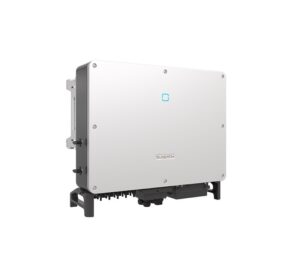In the rapidly expanding world of renewable energy, commercial solar systems play a pivotal role not only in reducing carbon footprints but also in enhancing the stability and efficiency of the electrical grid. Sungrow, a leading provider of solar energy solutions, has developed commercial solar systems that offer exceptional grid support functionality. These capabilities are crucial for businesses aiming to integrate solar power seamlessly while adhering to rigorous grid compliance standards. Here’s a deeper look at how Sungrow’s commercial solar systems stand out through their advanced grid support features.

Compliance with Various Support Regulations
Sungrow’s commercial solar systems are designed to be universally adaptable, complying with various international grid support regulations. This compliance is critical, as it ensures that businesses using Sungrow’s systems can operate efficiently across different geographic locations without the risk of violating local energy laws. Compliance with these regulations not only facilitates smoother operations but also enables businesses to avoid potential legal complications and fines associated with non-compliance.
The ability to meet diverse regulatory requirements reflects Sungrow’s commitment to providing versatile solutions that can be tailored to meet the specific needs of businesses in different regions. This adaptability is essential for multinational companies and businesses looking to expand into new markets, providing them with the assurance that their investment in solar technology will remain viable and legal across jurisdictions.
Low/High Voltage Ride Through (L/HVRT)
One of the standout features of Sungrow’s commercial solar systems is their Low/High Voltage Ride Through (L/HVRT) capabilities. This feature is vital for maintaining grid stability during periods of abnormal voltage fluctuations.
What is L/HVRT?
L/HVRT capability allows a solar system to continue operating and supporting the grid during temporary voltage dips (low voltage) or spikes (high voltage). Typically, when voltage levels deviate significantly from normal, solar inverters are required to disconnect from the grid to prevent damage to the system and ensure safety. However, with Sungrow’s L/HVRT technology, the system can withstand these fluctuations without disconnecting, thereby supporting the grid’s stability and resilience.
Benefits of L/HVRT
– Grid Stability: By maintaining operation during voltage fluctuations, Sungrow’s systems help stabilize the grid, which is particularly important in grids with high penetration of renewable energy sources. This stability is crucial for preventing outages and ensuring consistent power supply to end users.
– Enhanced Reliability: Businesses can rely on their solar systems to operate continuously, even in less-than-ideal grid conditions, ensuring a reliable source of energy and potentially reducing losses associated with downtime.
– Regulatory Compliance: Many energy regulators now require L/HVRT capabilities for new solar installations. Sungrow’s compliance with these requirements not only avoids penalties but also positions businesses as responsible and forward-thinking energy producers.
Conclusion
Sungrow’s commercial solar systems offer advanced grid support functionality that sets them apart in the marketplace. With stringent compliance to various support regulations and robust L/HVRT capabilities, these systems provide businesses with a reliable, efficient, and compliant solution for their energy needs. Investing in a Sungrow system means not just opting for renewable energy, but choosing a solution that contributes positively to the overall stability and sustainability of the power grid. This makes Sungrow not only a provider of solar technology but also a partner in promoting a resilient and efficient energy future.


